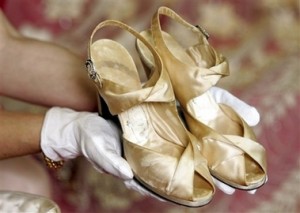 We often make assumptions about a person’s status and personality by the aesthetic value and quality of their day to day apparel. One outfit that’s particularly conspicuous and revealing about a person’s quality of life is his footwear. Our first impression on people who walk the streets barefooted or wearing shabby footwear is that of poor status. Conversely, those who wear modern, sophisticated, fashionable, and popular brands of shoes are often associated with the upper class society.
We often make assumptions about a person’s status and personality by the aesthetic value and quality of their day to day apparel. One outfit that’s particularly conspicuous and revealing about a person’s quality of life is his footwear. Our first impression on people who walk the streets barefooted or wearing shabby footwear is that of poor status. Conversely, those who wear modern, sophisticated, fashionable, and popular brands of shoes are often associated with the upper class society.
It’s interesting to note that footwear is not so much of a big deal during the ancient and classical civilizations. As a matter of fact, they were even regarded as self-indulgent, unaesthetic, and unnecessary, particularly the Greeks. This is quite the opposite of how we treat footwear today, sometimes even sacrificing comfort for the sake of fashion. Walking barefoot on the streets and workplace nowadays (with the exception of beach resorts, public baths, sacred shrines, etc) is deemed unseemly and inappropriate.
Origin: The Romans, later, regarded footwear as a necessity of living in a civilized world, unlike before where it was only good for display or for use only in theaters during stage plays. It was used primarily to protect the soles and feet as it was the case in hot and dry regions where wearing of sandals is necessary for everyday walking and travelling from place to place. Archeological evidence suggests that footwear may have been around some 10,000 years now beginning with the oldest sandal made of sagebrush found in Fort Rock Cave in the state of Oregon. Yet another discovery of what appears to be footprints of ancient sandals dates back even further to 500,000 B.C. as what carbon dating would suggest.
Fashion: As clothing leans towards fashion as a means of self-expression, so does footwear. Shoes and sandals are more than just foot protection. They’re more like status symbol, a mark that puts you somewhere along the social stratum. Some even went to the extent of designing footwear that prove unsuitable (and painful) for normal use. Foot binding is an extreme example where one’s feet is literally squashed into narrow, rigid, and badly fitting shoes. This had been the practice of women in some Asian countries where broad feet is regarded unsightly for a woman. Meanwhile, ladies shoes in the West that emphasize on the vertical were seen as one of the major cause of foot injuries.
Tradition: Shoes and other footwear have, over the years, acquired some of the traditional and cultural significance. During Biblical times, giving someone his sandal is a sign of an oath. It is also used in Medieval wedding rites signifying a wife’s submission to her husband’s authority. In the U.S., tying shoes to the bumper of the bridal car symbolizes changing of the caretaker.
Recommended Articles:

